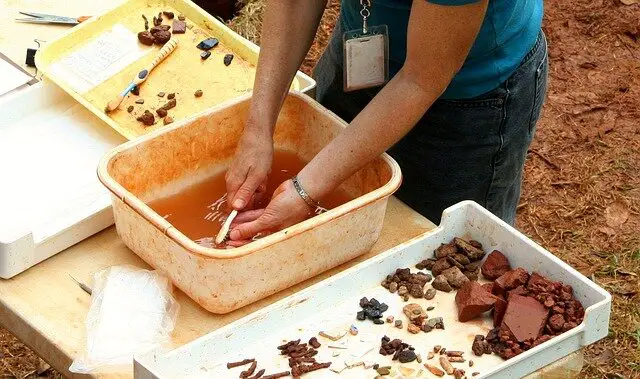

These factors placed real limits on settlement and industry, but also stimulated the introduction and adaptation of new ideas and technologies. Colonists from Britain quickly learned the lessons of the natural environment in terms of thin soils and erratic rainfall. Technology, environment, and society have always been intimately connected in Australia, from the earliest arrival of modern humans almost 50,000 years ago to the settlement of Europeans since 1788. Every phase of development in sonar technology brings an increase in sensors' resolving capability and therefore the ability to image smaller and smaller artifacts in greater detail. The last few years have seen developments of multielement sonar platforms, which allow for the acquisition of true concurrent sonar data sets from one platform. It describes the profiling methods such as single-beam echo-sounders and sub-bottom profilers, and swath methods such as side-scan sonar and multibeam echo-sounders. This article describes how acoustic data is generated. Acoustic systems provide baseline data at rates higher than those of experienced dive teams. With the advent of higher-resolution sonar systems, the focus in shipwreck studies has shifted toward site reconstruction and studies of site formation. In shipwreck studies, acoustic remote sensing has traditionally been used for reconnaissance surveys and for site relocation. This article offers an introduction to acoustic remote sensing. In some studies, this has led to deeper understanding of cultural values, while in others, to more pragmatic management or activist conclusions.

The concept of cognitive ownership has tended to be couched in relatively simple pragmatic terms: observing behaviour and drawing categorization of individuals and groups engaging in a cultural place as a management tool. The physical existence of an archaeological site reflects its multi-contextual conceptual identity. However, archaeology is a modern endeavour, a form of enquiry directly related to post-Enlightenment and modernist conceptions and constructions of knowledge, place, and society, enacted within a complex of social-administrative and political constraints. The prehistoric occupants of that site used and related to the landscape in very different ways throughout time. In the archaeological context, a sense of the evolving landscape becomes especially important where there is considerable time depth or cultural sequencing inherent in a single site. Underwater and Maritime Archaeology (10).

History and Theory of Archaeology (115).Cultural Heritage and Public Archaeology (38).Contemporary and Public Archaeology (96).Archaeology of Power and State Formation (27).Archaeological Methodology and Techniques (115).Anglo-Saxon and Medieval Archaeology (120).


 0 kommentar(er)
0 kommentar(er)
